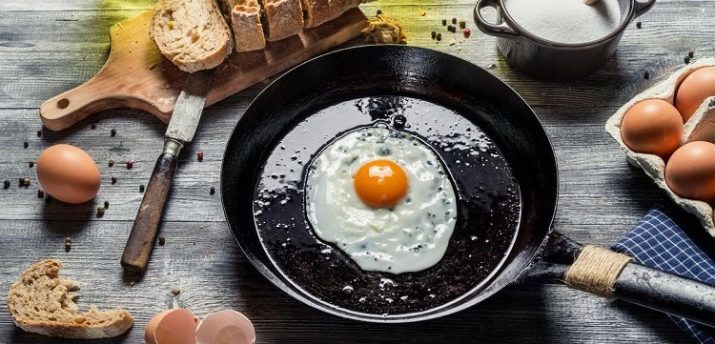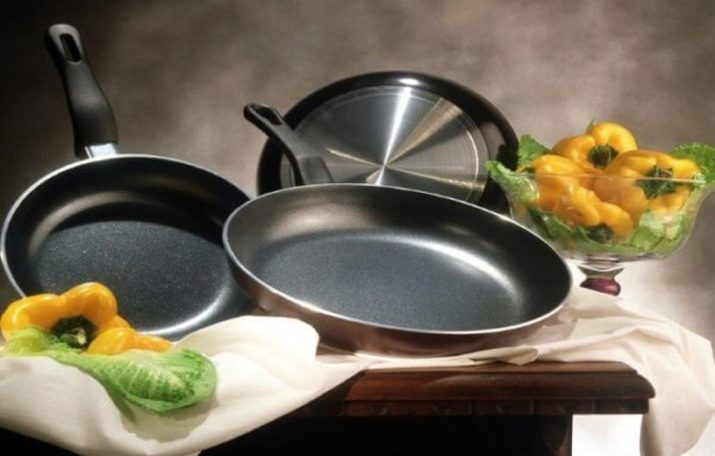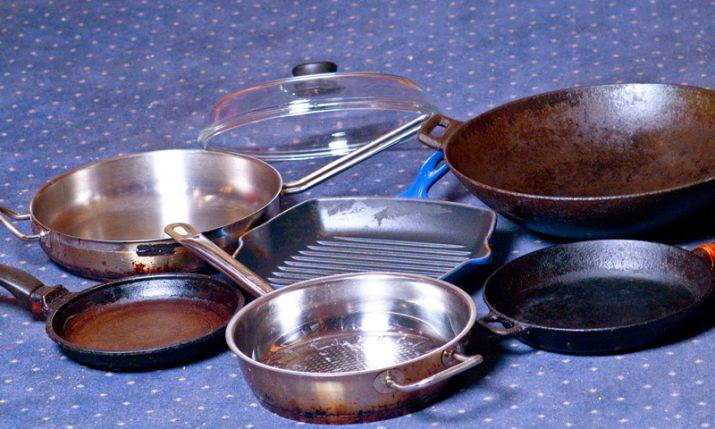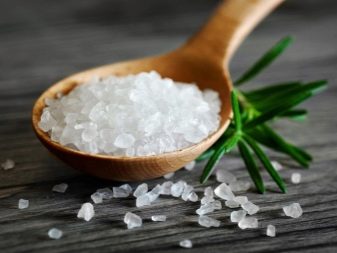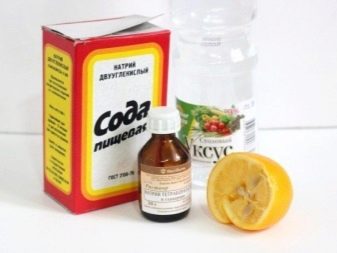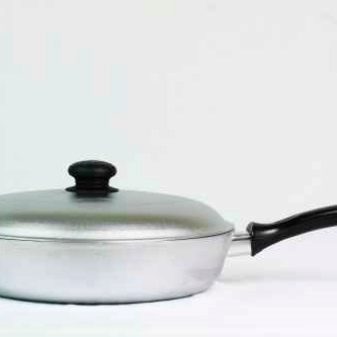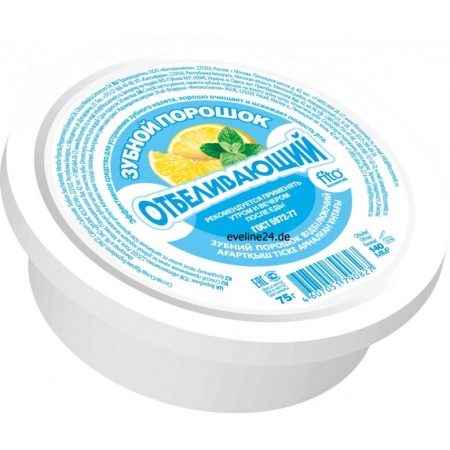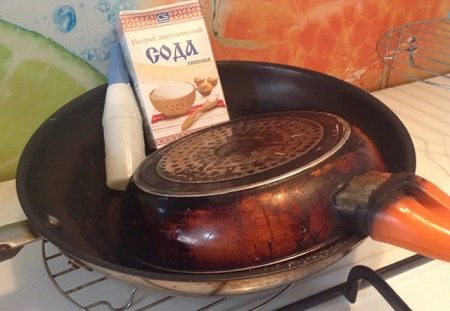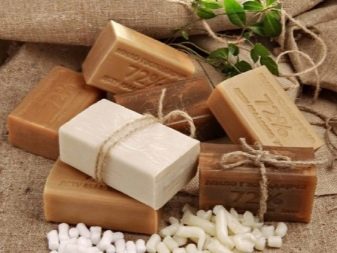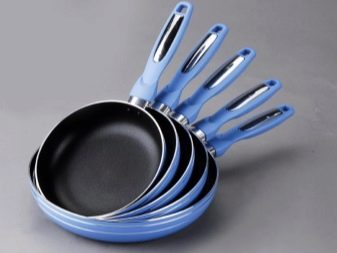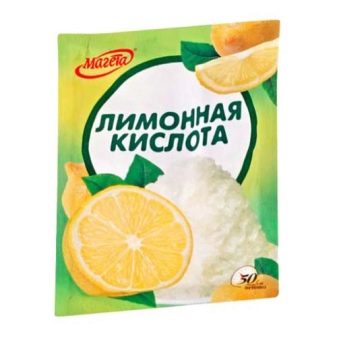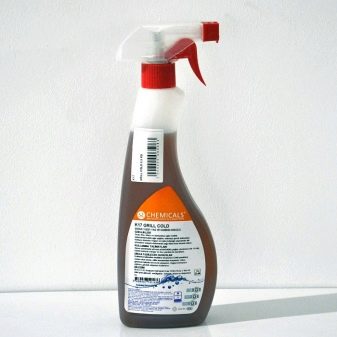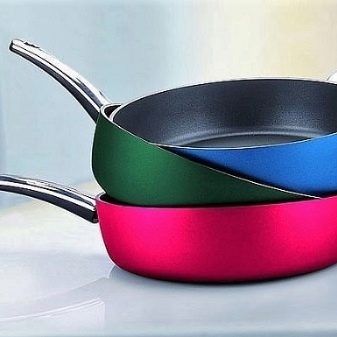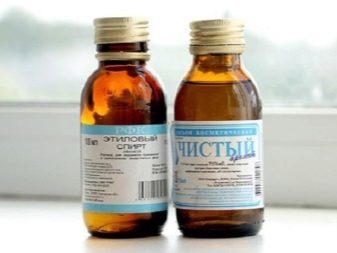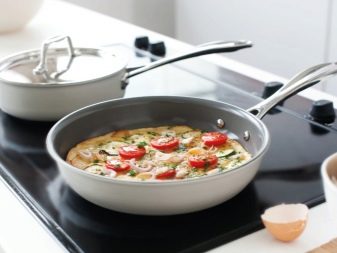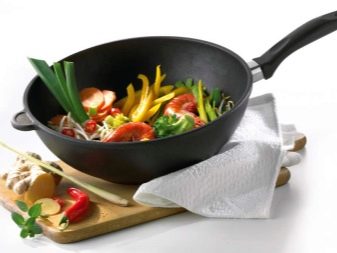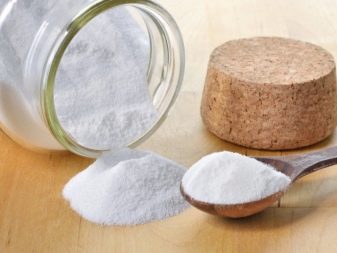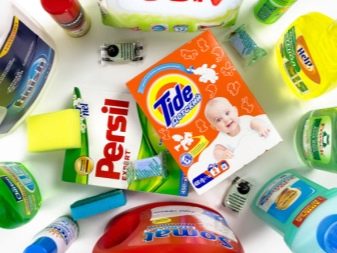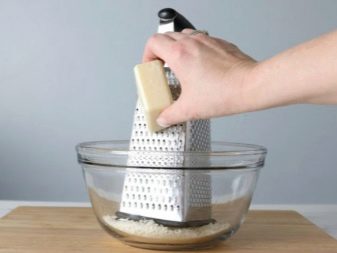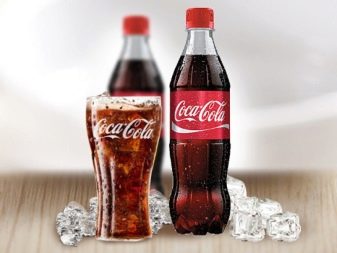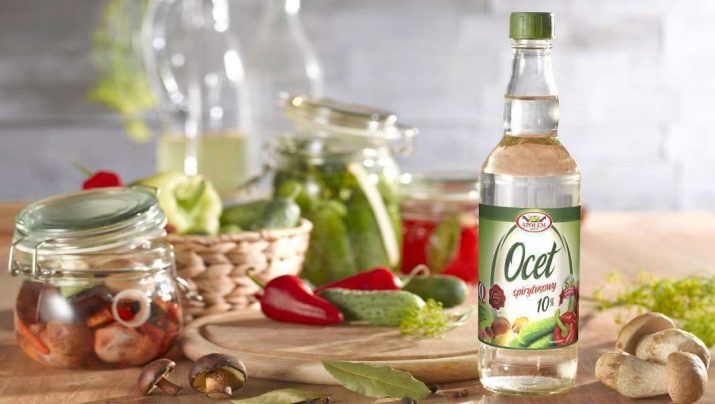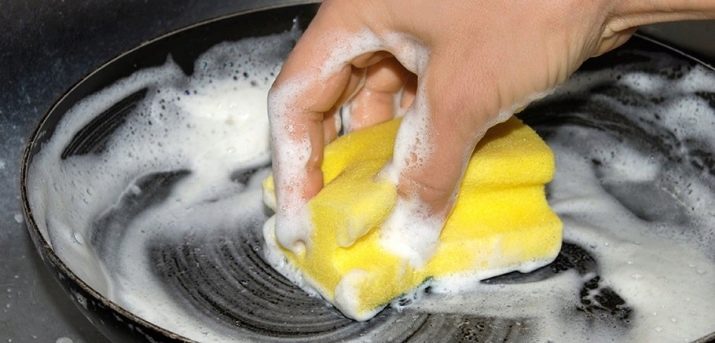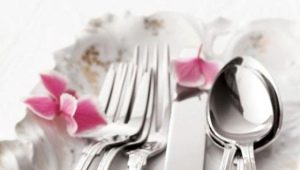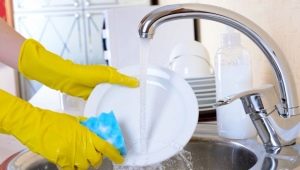How to clean the pan from the scale at home?
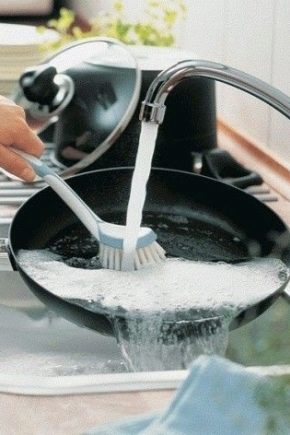
Any housewife faced with situations where dishes, pots or pans receive such pollution, which is very difficult to fight. In this case, the soot is the most problematic, which arises from constant contact with fire and forms a very thick layer on the surface of the frying pan, which is very hard to remove, especially if you don’t know exactly how to do it.
For different types of pans have their own methods that allow you to effectively deal with the problem.
Causes of
In a pan, food is prepared using oil, which, when heated, has an exceptionally liquid consistency while cooling, partially or completely freezes. When this process takes place, the particles of the oil are bound not only to each other, but they also capture the burned metal, which is formed in small quantities after each cooking. If you wash out the pan after each cooking and keep it absolutely clean, then there will be no problems with soot, but if you do not do this, then a bloom begins to form on the pot, which will grow with each cooking.
By itself, soot is ugly outwardly, because it has the appearance of dirty dishes, on which black dirt has adhered, but apart from the aesthetic negative effect, there is much more serious. In burned substances, harmful substances are formed on the surface of the pan that adversely affect human health - this is benzopyrene and peroxide. These carcinogens in large quantities are very dangerous. In nagare, there are very few of them, but even such an amount from constant admission to the body will cause some harm to health.
In order to clean the pan, it is important first of all to know what material it is made of, this particular nuance will play the most important role in the selection of means and methods for cleaning the surface of dishes.
Modern pans can be made from:
- cast iron;
- aluminum;
- teflon;
- ceramics.
Based on the type of pan, you can be taken for the fight against soot by the safest, but effective methods.
Each cover - your care
With the advent of a large number of material options for pans, it is important to be able to properly care for them so that there are no problems with cooking. The most convenient to care is Teflon dishes, which is protected from the occurrence of soot on both sides, although sometimes it can be formed in small quantities on it. In this case, it is important to know how to clean the surface without violating its integrity.
- Teflon pans very thin and delicate spraying, therefore it cannot be cleaned with aggressive agents and hard washcloths. For cleansing, you can use ordinary water by boiling it in a frying pan, and you can also add detergent to it, which will help to more easily clean the surface from carbon deposits.
- If Teflon is the most convenient material in the care, then the most problematic will be pans made of steel. Very often food sticks to this material, and soot quickly adheres to the walls, rubbing it off with the help of abrasive materials, you can see traces of work on the surface itself. After several such cleansing, the pan will be unpleasant to use, because its appearance will resemble old dishes.
- Another variation of the material from which the pans are made is cast iron. Such dishes will serve for a very long time, it is unpretentious in care, it is absolutely safe for food and person, and therefore, having the opportunity to choose, it is better to give preference to the old, but proven option. All care for such products is that it is necessary from time to time to remove carbon from the surface. For an effective process there are several ways, the first of which is the use of products intended for steel pans.
Soda, salt, vinegar and citric acid will help cope with soot and wipe it off much faster. A distinctive feature of this type of coating is resistance to metal and abrasive elements, therefore they can be cleaned by any means, while the integrity of the coating will be stable.
Using salt, you should slightly change the method of cleaning the surface with it. It should be poured on the bottom of the dish and pour vinegar, leaving the contents for fifteen minutes. When the time is up, the pan is put on the fire and brought to a boil, after which another glass of soda is poured. All ingredients should boil for seven minutes, after which you can remove the griddle from the oven and scrub it under cold water.
If it was possible to completely wash the coating of carbon and fat that was on the surface for cooking, then before preparing the food, it is important to thoroughly heat the product so that the food does not burn.
Washing out such pans, it is better not to wipe a small layer of fat, because it is this that provides the optimal conditions for cooking and prevents the food from burning. The process of caring for the product itself consists only in the periodic cleaning of carbon from the surface.
For ceramic coatings, special cleaning agents are provided., because this material is very whimsical and it is very simple to break its integrity, and the consequence of this will be the burning of all the food that is cooked in a frying pan. Despite the popularity of such products, they are extremely inconvenient to use, and care is a scrupulous work, unjustified.
Thus, choosing a griddle, you need to pay attention not to its external characteristics, but to ease of operation and ease of care for it.
Aluminum
Having at your disposal a pan of aluminum, you need to know exactly how to take care of it and remove carbon deposits. It is important to mention that the coating product is a fairly demanding materials, because you need to know exactly what can be used and what is not. Alkaline and high-acid products are clearly contraindicated for such coatings, because they cause significant damage.
It is possible to clean the pan at home using water and a couple of spoons of citric acid. Such contents need to be boiled and allowed to cool, after which a small carbon can be easily removed without the use of force or aggressive detergents.
Another method involves the use of ammonia and borax, which are added to water. Alcohol will need very little, and borax will need 10 grams. This solution should be well wiped pan. When the bloom comes down, it is important to rinse the dishes thoroughly so that nothing gets into the food.
If such a pan burns, then cleaning it is quite problematic, but possible. To do this, you need tooth powder, which is poured into the burnt bottom and left there for half a day. When the time is up, you just need to clean the surface with a rag and wash the pan well. If there are uncleaned places, the same process is repeated a second time.
A more complicated option, but proven by generations - the use of water, silicate glue and soda ash. The procedure will require 10 liters of water, 80 grams of glue and 100 grams of soda. In the ready solution is placed the pan and brought to a boil. It should be left on the fire for about fifteen minutes, after which it is very good to wash with soap.
The use of chemicals for aluminum coatings is prohibited., because they are very aggressive effect on this surface and violate its integrity, and their couples can lead to poisoning.
Teflon
Teflon pans are very popular with housewives due to their non-stick coating, lightness and ease of use. However, over time, traces of soot begin to appear on such products, which are not easy to handle, because Teflon is a rather delicate material, and it is not recommended to work on it with metal scrapers or aggressive chemicals.
In order to clean the inner surface, you can use regular soap. It needs to be grated and poured into the water, which is already poured into the pan. The entire contents are heated, but not brought to a boil, after which all the dirt from the inner surface can be easily and simply removed with a washcloth.
If you need to clean the bottom of a Teflon pan, then soda will do the job well. In a liter of water is added five tablespoons of salt and poured into a pot. Being on fire, the components are actively involved in cleaning the walls and day products. It is advisable to hold the solution on the fire for twenty minutes, and then let it cool.
This method is well suited for cleaning the surface of strong fat.
A popular option is to use toothpaste, which is suitable for cleaning the bottom of the pan. You just need to put it on the surface and after a short period of time wash it off. From old scale or plaque, Coca-Cola will be the best option for cleaning, which should be poured into a frying pan and boiled.
Citric acid can be used to clean the outside of the Teflon pan. To do this, boil three liters of water and pour a spoonful of acid into them, the resulting solution is poured into a large bowl, where you can easily put the pan. After a couple of hours, it can be removed from the solution and washed with plain water.
There are many more options for cleaning from burning on the outside:
- Sprays which are sold in stores. Spray need to spray on the desired area from the outside and wait a certain time, then rinse thoroughly with water.
- Gels and creamscharacterized by high concentration. The contaminated surface is treated with a cream or gel and left for half an hour, after which it is well washed out with water.
- Foam is one of the fastest substances that eliminate pollution in no more than 15 minutes.
When working with teflon surfaces it is important to remember that The use of household chemicals is permissible only for external use, inside are used benign harmless compounds. After any cleaning, the dishes should be thoroughly washed.
Ceramic
The use of ceramic pans is a very difficult task, because taking care of them is very time consuming. If you thoroughly wash them with careful means after each preparation, then great difficulties may not arise, but otherwise you will have to resort to additional cleaning agents.
To remove a little pollution from the surface, you can use vodka or ethyl alcohol, with the help of which the problem area is rubbed off. You need to work with a rag, soft washcloth or sponge. If the material is contaminated, replace it and continue cleaning. When everything is cleaned, the pan should be well washed with dishwashing detergent and wiped dry.
Another option involves the use of an enameled pan of such a size that it includes a frying pan. Pour the water more than half, you need to put the pot on the stove before boiling. In the process, you must rub the soap and add to the water, and after it, a hundred grams of baking soda. When the solution acquires a homogeneous mass, it is necessary to lower the pan and put it on a small fire.In this mode, the product is kept for an hour and a half, after which it is simply rinsed with water.
When cleaning the pan inside, you should use vinegar diluted with water in a ratio of 1: 1.5. The solution is poured into dishes and boiled for two hours. After cooling the water with a washcloth and liquid soap, you can clean the surface from carbon.
If you need to get rid of a thick layer of soot, you will need activated charcoal. It is necessary to grind it, and moisten the pan with water and apply dishwashing liquid on the walls, on which to pour coal. An hour later, polluted areas are wiped with a washcloth.
Nonstick
For non-stick pans there are a number of their methods for combating pollution of various degrees of complexity. The simplest, but no less effective is the use of soap, which is rubbed and added to the water. By boiling such a solution and leaving for several hours, you can clean the burnt pan quickly and without hassle.
To clean the bottom in a non-stick coated item, you can use soda. It in the amount of five spoons is added to a liter of water and set on fire for 20 minutes. When the contents have cooled, the pan is washed with a washcloth until it is completely clean of dirt.
From the outside, the pan can be cleaned using household chemicals, which is applied only to the outer walls, without contact with the inner surface. After applying the product should be on the surface for no more than fifteen minutes, after which it is easily washed off with a washcloth.
If there is a need to thoroughly clean the entire pan, you can take the old cauldrons, choose the best option in size so that the pan fits into it. Five liters of water is poured into the cauldron, two pieces of soap are rubbed (it is better if it is economic) and two packages of baking soda are added. A frying pan is placed in the finished solution and boiled over two hours on a fire. After the procedure, wash it with liquid soap or dishware.
Cast iron
Having a cast iron pan, you can clean it using a variety of options, and contamination from oil, dirt or scrambled eggs will not be a problem. The fastest option would be to use a nylon-coated brush and Coca-Cola diluted with hot water. To effectively cleanse food debris, wash the pan with hot water and pour kosher salt into it. With the help of napkins, it is rubbed into the walls and bottom, removing all food debris.
For this coating suitable options and using soda, salt and vinegar, activated carbon, ammonia and borax, vinegar and dishwashing detergent, soap with soda and glue. You can use fire to remove scale and any contamination; it is especially good to apply this method in open space by setting up a fire and placing a pan in it for a while. After the product is fully heated, any contamination can be easily removed with a knife.
If household chemicals are used to clean the inner surface, then it is best to place a lid on the pan to minimize the amount of harmful fumes that will appear.
Folk remedies
It is convenient, fast and inexpensive to use folk remedies for cleaning pans, because they do not lose their relevance. So, they clean the cast-iron pans with vinegar, pouring it into the frying pan with water and heating it over a fire. After this treatment, it is better to boil the pan to avoid the smell of vinegar.
As for soap, it is suitable for all types of products, easily and delicately removing contamination from the surface. Citric acid is best to clean cast iron pans. In a liter of water you need to dissolve a teaspoon of acid and soak the product in solution. Well removes dirt and hydrogen peroxide, which must be applied to a rag and wipe the pan.
Soda, salt and stationery glue cleaned old contaminants that are difficult to remove by other methods without damaging the surface. Each of these methods has proven its effectiveness, the main thing is to use them correctly, and then the result will please any hostess.
Useful tips
If there is no desire to deal with the fouling of the pans, then after each cooking it should be well washed. At the first signs of soot, you can dip the pan in boiling water for 15 minutes, then remove the pollution. Do not clean products with metal sponges and abrasives, because they leave a lot of scratches that cause food sticking. Before using a cast iron pan, it is necessary to heat it well and then cook it.
Working with aluminum pans, you should not use abrasive cleaners, they will spoil the surface. It is best to use soap for cleaning any pans, not household chemicals, even the strongest. After washing such dishes it is necessary to wipe it well. If Teflon products are used, they should be renewed every six months.
Ways to wash out the eaten fat and carbon deposits for each type of pans are different and the choice of options must be approached responsibly, because the duration of the product's use and the safety of the food prepared on it depends on it.
About what and how to clean the pan from carbon in the home, see the next video.
